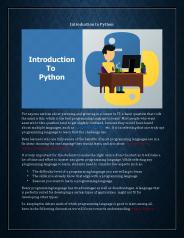Introduction to Internet Programming - PowerPoint PPT Presentation
1 / 62
Title:
Introduction to Internet Programming
Description:
http://www.caida.org/projects/internetatlas/gallery/ascore/AS_Network_1250x 1025.gif ... Host: www.microsoft.com ... Request for each host node to report back ... – PowerPoint PPT presentation
Number of Views:2704
Avg rating:3.0/5.0
Title: Introduction to Internet Programming
1
IntroductiontoInternet Programming
- Jim Fawcett
- CSE686 Internet Programming
- Summer 2004
2
References
- Dr. Sapossnek, Boston Univ., has a series of
presentations on various topics relating to
internet programming with Microsoft .Net
http//www.gotdotnet.com/team/student/academicresk
it/ - Paul Amer, Univ. Del., Hyper Text Transfer
Protocol (HTTP) http//www.cis.udel.edu/amer/856/
http.03f.ppt - World Wide Web Consortiumwww.w3c.org
- Our websitewww.ecs.syr.edu/faculty/fawcett/webpag
es/webdev.htm
3
Internet History
- 1961 First paper on packet-switching theory
- Kleinrock, MIT
- 1969 ARPANet goes on line
- Four hosts, each connected to at least two others
- 1974 TCP/IP, Berkley Sockets invented
- 1983 TCP/IP becomes only official protocol
- 1983 Name server developed at University of
Wisconsin. - 1984 Work begins on NSFNET
- 1990 ARPANET shutdown and dismantled
- 1990 ANSNET takes over NSFNET
- Non-profit organization MERIT, MCI, IBM
- Starts commercialization of the internet
- 1995 NSFNET backbone retired
4
Web History
- 1990 World Wide Web project
- Tim Berners-Lee starts project at CERN
- Demonstrates browser/editor accessing hypertext
files - HTTP 0.9 defined, supports only hypertext, linked
to port 80 - 1991 first web server outside Europe
- CERN releases WWW, installed at Stanford Linear
Accelerator Center - 1992 HTTP 1.0, supports images, scripts as well
as hypertext - 1993 Growth phase exponential growth through
2000 - 1994 CERN and MIT agree to set up WWW
Consortium - 1999 HTTP 1.1, supports open ended extensions
5
Original Goals of the Web
- Universal readership
- When content is available it should be accessible
from any type of computer, anywhere. - Interconnecting all things
- Hypertext links everywhere.
- Simple authoring
6
Web Design Principles
- Universal
- Decentralized
- Modular
- Extensible
- Scalable
- Accessible
- Forward/backwards compatibility
7
Basic Concepts
- Universal Addressing
- TCP/IP, DNS
- Universal Processing Protocols
- URLs, HTTP, HTML, FTP
- Format Negotiation through HTTP
- Hypertext ? Hypermedia via HTML ? XHTML
- Support for text, images, sound, and scripting
- Client/Server Model
8
Servers on the Internet
- HTTP - HyperText Transport Protocol
- FTP - File Transport Protocol
- Gopher - Text and Menus
- NNTP - Network News Transfer Protocol
- DNS - Distributed Name Service
- telnet - log into a remote computer
- Web services - coming soon to a web server near
you
9
HyperText Markup Language (HTML)
- The markup language used to represent Web pages
for viewing by people - Designed to display data, not store/transfer
data - Rendered and viewed in a Web browser
- Can contain links to images, documents, and
other pages - Not extensible uses only tags specified by the
standard - Derived from Standard Generalized Markup Language
(SGML) - HTML 3.2, 4.01, XHTML 1.0
10
Internet TechnologiesWWW Architecture
Client Browser
Client
Request http//www.msn.com/default.asp
TCP/IP
Network
Response lthtmlgtlt/htmlgt
Web Server
Server
11
Some Interesting Views of the Internet
- The following plots are from the Cooperative
Association for Internet Data Analysis - http//www.caida.org/tools/visualization/walrus/ga
llery1/ - http//www.caida.org/projects/internetatlas/galler
y/ascore/AS_Network_1250x1025.gif - http//www.caida.org/tools/visualization/plankton/
Images/
12
Networks
- Network an interconnected collection of
independent computers - Why have networks?
- Resource sharing
- Reliability
- Cost savings
- Communication
- Web technologies add
- New business models e-commerce, advertising
- Entertainment
- Applications without a client-side install
13
Network Protocol Stack
HTTP
HTTP
TCP
TCP
IP
IP
Ethernet
Ethernet
14
Networks - Transport Layer
- Provides efficient, reliable and cost-effective
service - Uses the Sockets programming model
- Ports identify application
- Well-known ports identify standard services
(e.g. HTTP uses port 80, SMTP uses port 25) - Transmission Control Protocol (TCP)
- Provides reliable, connection-oriented byte
stream - UDP
- Connectionless, unreliable
15
Communication Between Networks
- Internet Protocol (IP)
- Routable, connectionless datagram delivery
- Specifies source and destination
- Does not guarantee reliable delivery
- Large message may be broken into many datagrams,
not guaranteed to arrive in the order sent - Transport Control Protocol (TCP)
- Reliable stream transport service
- Datagrams are delivered to the receiving
application in the order sent - Error control is provided to improve reliability
16
Network Protocols
OSI Model Layers
TCP/IP Protocol Architecture Layers
TCP/IP Protocol Suite
Application Layer
Presentation Layer
Application Layer
Telnet
FTP
SMTP
DNS
RIP
SNMP
HTTP
Session Layer
Host-to-Host Transport Layer
TCP
UDP
Transport Layer
Network Layer
Internet Layer
IP
ICMP
IGMP
ARP
Data Link Layer
Network Interface Layer
Token Ring
Ethernet
ATM
Frame Relay
Physical Layer
17
HTTP Protocol
- Client/Server, Request/Response architecture
- You request a Web page
- e.g. http//www.msn.com/default.asp
- HTTP request
- The Web server responds with data in the form of
a Web page - HTTP response
- Web page is expressed as HTML
- Pages are identified as a Uniform Resource
Locator (URL) - Protocol http
- Web server www.msn.com
- Web page default.asp
- Can also provide parameters ?nameLeon
18
HTTP is Stateless
- HTTP is a stateless protocol
- Each HTTP request is independent of previous and
subsequent requests - HTTP 1.1 introduced keep-alive for efficiency
- Statelessness has a big impact on how scalable
applications are designed
19
Cookies
- A mechanism to store a small amount of
information (up to 4KB) on the client - A cookie is associated with a specific web site
- Cookie is sent in HTTP header
- Cookie is sent with each HTTP request
- Can last for only one session (until browser is
closed) or can persist across sessions - Can expire some time in the future
20
Address Resolution
21
HTTP Messagesas seen by packet sniffer
TCP 113 192.168.0.102 207.46.144.188 2834
80 2004.05.19 - 121520.718 E qSó_at_ šÀ
fÏ.































